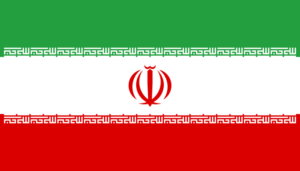
By Kurt Valentine, Web Editor
On March 8, 1979, International Women’s Day, more than 100,000 Iranian men and women filled the streets of Tehran to protest the compulsory dress code enacted by the recently formed Islamic Republic of Iran.[1] “This turned out to be the last day women walked the streets of Tehran uncovered.”[2] The previous day, new laws were passed that made wearing the hijab in public compulsory for all women.[3] Hengameh Golestan, who photographed the protests, recalls, “They were demanding the freedom of choice. It wasn’t a protest against religion or beliefs, in fact many religious women joined, this was strictly about women’s rights, it was all about having the option.”[4]
Nearly forty years later, Iranian women are still protesting for the freedom of choice. On December 30, 2017, Police in Tehran arrested 29 people for their involvement in protests against the country’s mandatory hijab law.[5] At the December protest, Vida Movahed stood on a utility box on a busy street in Tehran and took off her head scarf.[6] She tied her scarf to the end of a stick and waived it like a flag.[7] Photos and videos of Movahed went viral and many Iranian women followed suit.[8]
In recent years, activists have used the internet and social media sites to challenge the mandatory hijab rules. One such activist is Masih Alinejab. Alinejab runs a Facebook page called My Stealthy Freedom, which encourages women in Iran to post pictures of themselves without headscarves in defiance of the rules.[9] Alinejab stated, “Forced hijab is the most visible symbol of oppression against women in Iran, that’s why fighting for freedom to wear or not to wear hijab is the first step towards full equality. . . These women are not protesting against a piece of cloth, it’s about our identity, our dignity, and our freedom of choice. Our body, our choice.”[10]
Women who do post pictures of themselves online without head scarfs face arrest with impunity and prosecution without due process.[11] On July 16, 2018, local police in the southern Iranian province of Hormozgan announced the arrest of forty-six fashion workers, including eight models, for posting images and clips on Instagram.[12] Additionally, photographers, hair stylists, and boutique owners were among those arrested.[13]
These arrests make it clear that Iran is still insistent on controlling women’s dress. The current Supreme Leader of Iran, Ali Khamenei, believes that giving women the right to wear what they want is an existential threat to Iran. In 2003, on Iranian State TV, Khamenei stated:
More than Iran’s enemies need artillery, guns, and so forth, they need to spread cultural values that lead to moral corruption. They have said this many times. I recently read in the news that a senior official in an important American political center, said: “Instead of bombs, send them miniskirts.” He is right. If they arouse sexual desires in any given county, if they spread unrestrained mixing of men and women, and if they lead youth to behavior to which they are naturally inclined by instincts, there will no longer be any need for artillery and guns against that nation.[14]
In 2017, Iranian President Hassan Rouhani won his re-election bid “because he made so many pledges to help reform many of the gender discriminatory laws.”[15] However, Rouhani has been the Iranian President since 2013 but “has done very little to bring about significant change for Iranian civil society.”[16] With the recent wave of protests, the rise of social media, and 50% of the population favoring the freedom of choice, the Iranian government may not be able to impose these restrictions much longer.[17]
Sources
[1] Pip Cummings. The Day 100,000 Iranian Women Protested the Head Scarf, Sept. 15, 2015 (https://womenintheworld.com/2015/09/15/the-day-100000-iranian-women-protested-the-head-scarf/).
[2] Sian Cain. Interview with Hengameh Golestan. Hengameh Golestan’s Best Photograph: Iranian Women Rebel Against the 1979 Hijab Law, 2015 (https://www.theguardian.com/artanddesign/2015/sep/03/hengameh-golestans-best-photograph-iranian-women-rebel-against-the-1979-hijab-law).
[3] Cummings, Supra, at n. 1.
[4] 100,000 Iranian Women March Against The Hijab Law In 1979 Tehran, quoting Hengameh Golestan. (https://flashbak.com/100000-iranian-women-march-hijab-law-1979-tehran-388136/).
[5] Eliza Mackintosh, Iran Publishes Report Saying 49% of Iranians Against Compulsory Veil, (Feb., 6, 2018). (https://edition.cnn.com/2018/02/05/middleeast/iran-hijab-law-report-intl/index.html).
[6] Robin Wright, Hijab Protests Expose Iran’s Core Divide, (Feb., 7, 2018). (https://www.newyorker.com/news/news-desk/hijab-protests-expose-irans-core-divide).
[7] Id.
[8] Id.
[9] Saeed Kamali Dehghan, Second Women Arrested in Tehran for Hijab Protest. (Jan. 29, 2018) (https://www.theguardian.com/world/2018/jan/29/second-woman-arrested-tehran-hijab-protest-iran).
[10] Id.
[11] Crushing Creativity: Iran’s Hardliners Crackdown on the Fashion Industry, The Center for Human Rights in Iran, (2017) (https://www.iranhumanrights.org/wp-content/uploads/Crushing-Creativity-7.pdf).
[12] July 17, 2018, Iran Arrests 46 Fashion Workers Including Eight Models in Hormozgan Province, Center for Human Rights in Iran. (https://www.iranhumanrights.org/2018/07/iran-cracks-down-on-modeling-ring-in-hormozgan-province/).
[13] Id.
[14] Karim Sadjadpour, Reading Khamenei: The World View of Iran’s Most Powerful Leader, Carnegie Endowment for International Peace, p. 17 (2009) (http://carnegieendowment.org/files/sadjadpour_iran_final2.pdf).
[15] Mackintosh, Supra, at n. 6.
[16] Id.
[17] Wright, Supra, at n. 7.